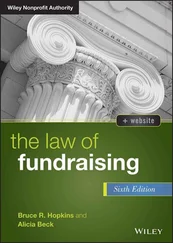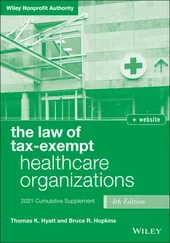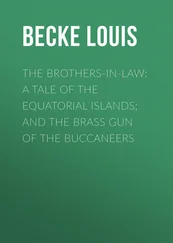Bruce R. Hopkins - The Tax Law of Charitable Giving
Здесь есть возможность читать онлайн «Bruce R. Hopkins - The Tax Law of Charitable Giving» — ознакомительный отрывок электронной книги совершенно бесплатно, а после прочтения отрывка купить полную версию. В некоторых случаях можно слушать аудио, скачать через торрент в формате fb2 и присутствует краткое содержание. Жанр: unrecognised, на английском языке. Описание произведения, (предисловие) а так же отзывы посетителей доступны на портале библиотеки ЛибКат.
- Название:The Tax Law of Charitable Giving
- Автор:
- Жанр:
- Год:неизвестен
- ISBN:нет данных
- Рейтинг книги:5 / 5. Голосов: 1
-
Избранное:Добавить в избранное
- Отзывы:
-
Ваша оценка:
- 100
- 1
- 2
- 3
- 4
- 5
The Tax Law of Charitable Giving: краткое содержание, описание и аннотация
Предлагаем к чтению аннотацию, описание, краткое содержание или предисловие (зависит от того, что написал сам автор книги «The Tax Law of Charitable Giving»). Если вы не нашли необходимую информацию о книге — напишите в комментариях, мы постараемся отыскать её.
The Tax Law of Charitable Giving — читать онлайн ознакомительный отрывок
Ниже представлен текст книги, разбитый по страницам. Система сохранения места последней прочитанной страницы, позволяет с удобством читать онлайн бесплатно книгу «The Tax Law of Charitable Giving», без необходимости каждый раз заново искать на чём Вы остановились. Поставьте закладку, и сможете в любой момент перейти на страницу, на которой закончили чтение.
Интервал:
Закладка:
(b) Other Rationales
There are, as noted, other rationales for tax exemption that pertain to charitable organizations. One of these, somewhat less lofty than that accorded charitable and social welfare organizations, is extended as justification for the exemption of trade associations and other forms of business leagues. 61 These entities function to promote the welfare of a segment of society: the business, industrial, and professional community. An element of the philosophy supporting this type of tax exemption is that a healthy business climate advances the public welfare. The tax exemption for labor unions and other labor organizations rests upon a similar rationale. 62
The tax exemption for fraternal beneficiary organizations also depends, at least in part, on this defense. A study of the insurance practices of large societies by the Department of the Treasury 63 concluded that this rationale is inapplicable with respect to the insurance programs of these entities because the “provision of life insurance and other benefits is generally not considered a good or service with significant external benefits” to society. The report stated, however, that “tax exemption for these goods and services [insurance and like benefits] may be justified in order to encourage” the charitable activities conducted by these organizations. The inherent tax rationale 64 “may” provide a basis for tax exemption for “certain” of these societies' services, according to the report. Further, the report observed that “[i]nsurance is not a type of product for which consumers may lack access to information on the appropriate quantity or quality that they need.” Therefore, the market failure rationale 65 “may not be applicable” in this instance.
Other federal tax exemption provisions may be traced to an effort to achieve a particular objective. These provisions tend to be of more recent vintage, testimony to the fact of a more complex Internal Revenue Code. For example, specific tax exemption for veterans' organizations 66 was enacted to create a category of organizations entitled to use a particular exemption from the unrelated business income tax, 67 and statutory exemption for homeowners' associations 68 came about because of a shift in the policy of the Internal Revenue Service (IRS) regarding the scope of tax exemption provided for social welfare organizations. The tax exemption for college and university investment vehicles was the result of Congress's effort to preserve the exempt status of a specific common investment fund in the face of an IRS determination to the contrary. 69 As is so often the case with respect to the tax law generally, a particular tax exemption provision can arise as the result of case law, or to clarify it; this was the origin of statutes granting tax exemption to cooperative hospital service organizations, 70 charitable risk pools, 71 child care organizations, 72 public safety testing entities, 73 and qualified tuition programs. 74
All of the foregoing rationales for tax-exempt organizations have been described in philosophical, historical, political, policy, or technical tax terms. Yet another approach to an understanding of exempt organizations can be found in economic theory.
Principles of economics are founded on the laws of supply (production) and demand (consumption). Using the foregoing analyses, exempt organizations appear to have arisen in response to the pressures of the supply side—namely, the need for the goods and services provided—and the force of pluralistic institutions and organizations in society. Others, however, view tax-exempt organizations as responses to sets of social needs that can be described in demand-side economic terms, a “positive theory of consumer demand.” 75
According to the demand-side analysis, consumers in many contexts prefer to deal with nonprofit, tax-exempt, usually charitable organizations in purchasing goods and services, because the consumer knows that a nonprofit organization has a “legal commitment to devote its entire earnings to the production of services,” 76 whereas for-profit organizations have a great incentive to raise prices and cut quality. Generally, it is too difficult for consumers to monitor these forces. This means that consumers have a greater basis for trusting tax-exempt organizations to provide the services—a restatement, in a way, of the fiduciary concept. Thus, the consumer, pursuant to this analysis, “needs an organization that he can trust, and the non-profit, because of the legal constraints under which it must operate, is likely to serve that function better than its for-profit counterpart.” 77
This phenomenon has been described as “market failure” as far as for-profit organizations are concerned, in that, in certain circumstances, the market is unable to police the producers by means of ordinary contractual devices. 78 This, in turn, has been described as “contract failure,” which occurs when consumers “may be incapable of accurately evaluating the goods promised or delivered” and “market competition may well provide insufficient discipline for a profit-seeking producer.” 79 Hence, according to this theory, the consuming public selects the nonprofit organization, which operates without the profit motive and offers the consumer the “trust element” that the for-profit organizations cannot always provide.
Although the economic demand-side theory is fascinating and undoubtedly contains much truth, it probably overstates the aspect of consumer demand and downplays historical realities, tax considerations, and human frailties. The nonprofit organization antedates the for-profit corporation, and many of today's tax-exempt organizations may be nonprofit because their forebears started out as such. In addition, the forces of pluralism of institutions and organizations continue to shape much of the contemporary independent sector.
(c) Freedom of Association
Tax exemption for nonprofit membership organizations may be viewed as a manifestation of the constitutionally protected right of association accorded the members of these organizations. There are two types of freedom of association . One type—termed the freedom of intimate association —is the traditional type of protected association derived from the right of personal liberty. The other type—the freedom of expressive association —is a function of the right of free speech protected by the First Amendment to the U.S. Constitution.
By application of the doctrine of freedom of intimate association, the formation and preservation of certain types of highly personal relationships are afforded a substantial measure of sanctuary from unjustified interference by government. 80 These personal bonds are considered to foster diversity and advance personal liberty. 81 In assessing the extent of constraints on the authority of government to interfere with this freedom, a court must make a determination of where the objective characteristics of the relationship, which is created when an individual enters into a particular association, are located on a spectrum from the most intimate to the most attenuated of personal relationships. 82 Relevant factors include size, purpose, policies, selectivity, and congeniality. 83
The freedom to engage in group effort is guaranteed under the doctrine of freedom of expressive association 84 and is viewed as a way of advancing political, social, economic, educational, religious, and cultural ends. 85 Government, however, has the ability to infringe on this right when compelling state interests are served that are unrelated to the suppression of ideas and that cannot be achieved through means significantly less restrictive of associational freedoms. 86
These two associational freedoms have been the subject of a U.S. Supreme Court analysis concerning an organization's right to exclude women from its voting membership. 87 The Court found that the organization involved and its chapters were too large and unselective to find shelter under the doctrine of freedom of intimate association. Although the Court also conceded that the “[f]reedom of association therefore plainly presupposes a freedom not to associate,” it concluded that the governmental interest in eradicating gender-based discrimination was superior to the associational rights of the organization's male members. 88 In general, the Court held that to tolerate this form of discrimination would be to deny “society the benefits of wide participation in political, economic, and cultural life.” 89
Читать дальшеИнтервал:
Закладка:
Похожие книги на «The Tax Law of Charitable Giving»
Представляем Вашему вниманию похожие книги на «The Tax Law of Charitable Giving» списком для выбора. Мы отобрали схожую по названию и смыслу литературу в надежде предоставить читателям больше вариантов отыскать новые, интересные, ещё непрочитанные произведения.
Обсуждение, отзывы о книге «The Tax Law of Charitable Giving» и просто собственные мнения читателей. Оставьте ваши комментарии, напишите, что Вы думаете о произведении, его смысле или главных героях. Укажите что конкретно понравилось, а что нет, и почему Вы так считаете.












